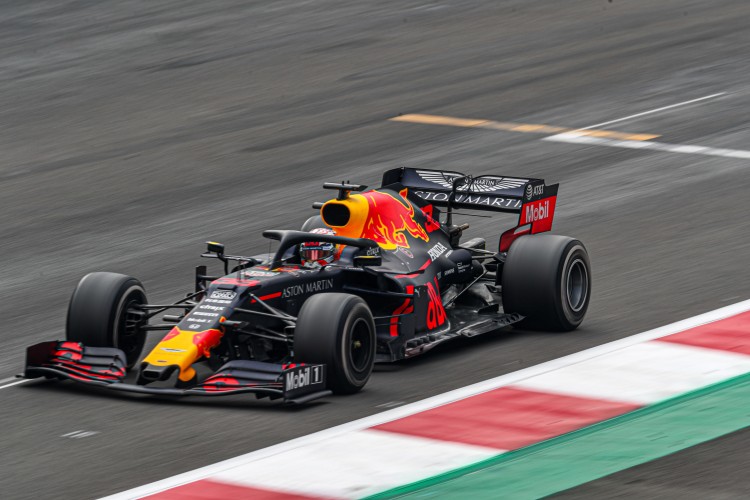
Among the most watched sporting events on the planet is the Formula One motor racing series. It represents the highest class of competition for single-seater formula racing vehicles in international competition.
So, what is Formula 1? Formula One is the maximum level of worldwide racing for single-seater open-wheel formula vehicles regulated by the Fédération Internationale de l’Automobile (FIA).
The Fédération Internationale de l’Automobile (FIA), which was founded on the 20th of June in 1904, is the governing body for Formula One racing. At Silverstone in the United Kingdom on May 13, 1950, the first inaugural World Drivers’ Championship was held, marking the beginning of the Formula One racing series.
In 1981, the competition changed its name to the FIA Formula One World Championship.
Throughout the course of a season, a number of competitions known as Grand Prix take place in different locations throughout the world. A season of Formula One racing consists of all of these individual races.
The term “Formula” refers to a predetermined set of guidelines that must be followed by all of the competing teams. The French phrase “Grand Prix” literally means “great prize” when translated into English.
The FIA has ranked the racetracks as “1,” hence they are used for these competitions. As a result, they went with the moniker Formula One.
The FIA has given its stamp of approval to the purpose-built circuits that host the races. The vast majority of racetracks are located in rather rural areas but are yet well accessible to major towns.
There are just a handful of competitions, like the British Grand Prix and the Singapore Grand Prix, that take place on restricted sections of public highways. The World Championship of Formula One Automobile Racing is widely considered to be the pinnacle of racing competition around the world.
In order to compete in a Formula One race, a driver must be in possession of a current and valid Super Licence from the FIA. At the finish of each race, a points system is used to rank both the drivers and the manufacturers of the vehicles based on their performance.
At the completion of each season, the FIA tallies up all of the points that have been earned by every competitor and then hand out 2 yearly World Championships, one for every one of the racers and the manufacturers.
Table of Contents
What Year Did Formula One Debut?
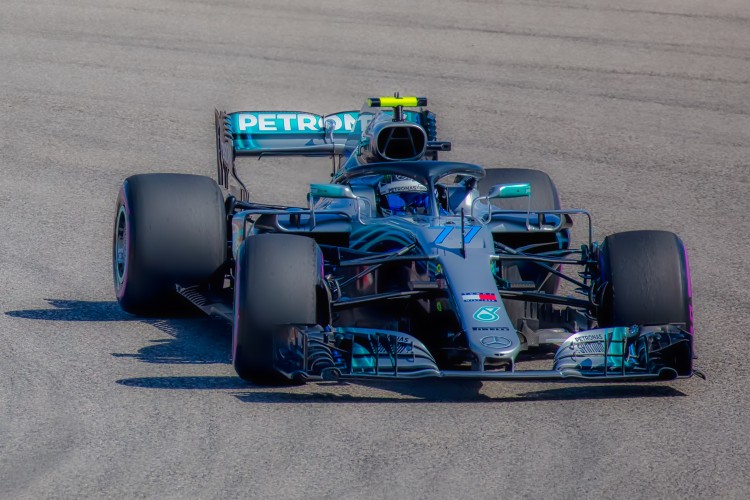
The European Championship held throughout the 1920s and 1930s can be considered the cradle from which Formula One sprang. All competition in Europe came to a halt as a result of World War II.
If you want to know How Much Horsepower Do F1 Cars Have? (DETAILED EXPLANATION), click here.
After the end of World War II, a number of people who were already interested in auto racing began competing in it. 1946 was the year that the rules for Formula One were finalized and all drivers were required to abide by them. The inaugural Formula One Grand Prix race took place in 1946 in Turin.
The debate resulted in the suspension of Grand Prix racing, despite the fact that several Grand Prix organizations around Europe had already developed rules for Grand Prix racing.
1947 was the year that officially marked the beginning of the World Drivers’ Championship. In 1950, Silverstone in Great Britain played host to the inaugural race for the Formula One World Championship. 8 years later, the World Constructors’ Championship was hosted for the first time.
If you want to know Which F1 Car Is the Fastest of All Time? (WHAT YOU DIDN’T KNOW), click here.
Who Was the First F1 World Champion?
Guiseppe Farina, an Italian driver who was driving an Alfa Romeo, won the 1st World Championship for Drivers by slightly defeating Juan Manuel Fangio, an Argentine driver who was also his teammate.
Fangio staged a remarkable comeback and triumphed to take the championship in 1951. After that, the Argentines went on to win in 1954, 1955, 1956, and 1957, establishing an early record for 4 successive titles that lasted for 45 years after it was first set.
If you want to know What Is The Price Of A Formula 1 Car? (ALL PARTS CALCULATED), click here.
During the early days of the automobile, road car manufacturers such as Mercedes-Benz, Alfa Romeo, Ferrari, and Maserati competed in races with their vehicles.
These companies were the exact same ones who had been in competition well before the world war. The engines in the vehicles ranged in size from 1.5 liters to 4.5 liters and were either supercharged or normally aspirated depending on the model.
In 1954, when the new formula limited engines to 2.5 liters, Mercedes–Benz released the W196 with fuel injection. At the time, the W196 was the fastest car ever produced by the company.
If you want to know What Engines Do F1 Cars Use? (WHAT YOU DIDN’T KNOW!!!), click here.
What Technological and Engineering Advancements Did F1 Undergo Between 1960 and 1970?
The teams, during the course of the following 2 decades, became aware of the necessity of specifically constructed vehicles for World Championship racing.
The victories that Jack Brabham had in 1959, 1960, and 1966 helped to popularize the use of mid-engined cars in championship racing. At the British Grand Prix in 1961, the Fergusson P99 was the final car with a front-mounted engine to race in the World Championships.
If you want to know How Fast Is A Formula 1 Car? (DETAILED EXPLANATION), click here.
In 1962, Lotus was the company that made the most significant advancement in technology for mid-engined automobiles. They put an end to the era of the space-frame chassis by introducing the aluminum monocoque chassis into the racing scene.
Beginning in 1968 with Imperial Tobacco, tobacco company sponsors began displaying advertisements for their brands on racing cars. That ushered in a new era of sponsorship in the world of auto racing.
When aerofoils were first used in the late 1960s, it was only then that aerodynamics began to play a role in the World Championships. The incorporation of ground-effect aerodynamics was Lotus’s solution to the problem of how to improve cornering speeds.
As a result of the downforce, robust springs were required in order to keep the ride height consistent. The only source of comfort for the drivers was the cushioning provided by the tires, which they had to rely on completely.
If you want to know What Are The Best F1 Simulators? (ON THE MARKET), click here.
How Much Money Does Formula One Make?
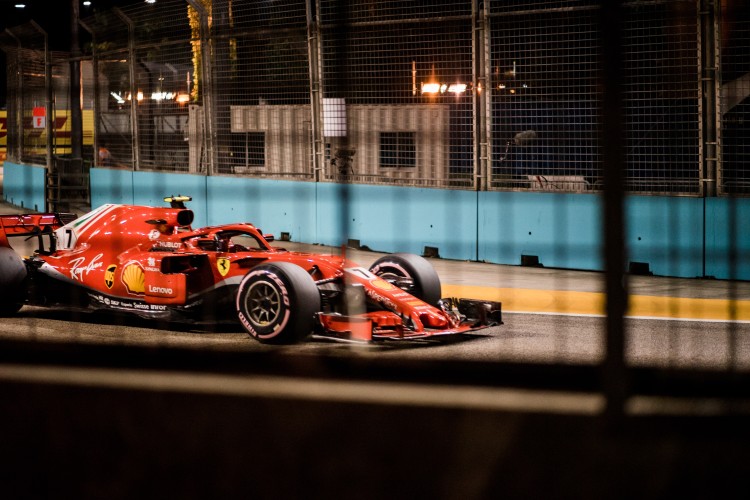
The purchase of the Brabham Team by Bernie Ecclestone in 1971 secured him a place in the Formula One Constructors Association (FOCA). In 1978, he was elected to lead the organization as its president.
Prior to Ecclestone’s involvement, the circuit owners were engaged in negotiations with the various teams. Ecclestone was instrumental in persuading the FOCA to grant the circuit owners a cooperative arrangement, which ultimately worked out to the benefit of the constructors.
If you want to know What Is the Top Speed of an F1 Car? (AMAZING!!!), click here.
When the Fédération Internationale de Sport Automobile (FISA) was established in 1979, its first order of business was to establish its right to money from television broadcasts.
As a result of a disagreement with FISA on the technical requirements, FOCA refused to participate in a Grand Prix. FISA was compelled to remove the sanctions it had placed on the race. Later on, FISA handed over the responsibility for the management of tv contracts to FOCA.
If you want to know How Much Does an F1 Pit Crew Member Earn? (INTERESTING FACTS), click here.
There were more arguments about it. Constructors were releasing turbocharged engines that had the capacity to generate more than 1,300 horsepower (BMW in 1986).
The FISA had already prohibited ground effect aerodynamics by the year 1983. In 1984, the FIA restricted the amount of fuel that could be stored in the tanks, which in turn decreased the amount of power that the engines could produce.
In the end, the FIA made the decision in 1989 to completely outlaw turbocharged engines.
In 1982, Lotus debuted for the first time a vehicle that used active suspension; it was the Lotus 91. In 1987, Ayrton Senna won the Grand Prix of Monaco in his actively suspended vehicle, which he had driven to victory the previous year.
Note: Electronic driver assistance systems, semi-automatic gearboxes, and traction control first made their way into the cars used by the teams in the 1990s.
The Fédération Internationale de Sport Automobile (FIA) put a ban on several of these aids in response to competitors’ accusations that technology was playing a larger role in deciding who won races.
If you want to know How Long Is a Formula One Season? (For The Fans), click here.
Although investors continued to invest funds into the sport, Formula One grew into a major business. Television rights brought in a significant amount of revenue for the FIA and the teams.
The teams have begun investing millions and millions of dollars in the development of cars that are capable of winning the championship. A second Concorde Agreement was signed by the parties in 1992, and a third one was signed in 1997.
What Is the Formula One Concorde Agreement?
The Formula One Concorde Agreement is a treaty that was signed between the Formula One Group, the Fédération Internationale de Sport Automobile (FIA), and the Formula One team.
The 3 parties come to an agreement in the form of a contract about the distribution of the profits made through television programming. The deal has led to greater levels of professionalism across the board, as well as an increase in overall revenue for the sport.
If you want to know Why Do F1 Cars Have Sidepods? (INTERESTING FACTS!!!), click here.
Up to this point, 8 Concorde Agreements have been signed. The most recent agreement was reached in the year 2020, however, prior to that, agreements were also struck in 1981, 1987, 1992, 1997, 1998, 2009, and 2013.
The agreements also incentivize teams to compete in all of the Grand Prix. This is favorable for broadcasters who have made significant investments in television rights for the sport.
If you want to know What Are F1 Grid Penalties? (DETAILED EXPLANATION), click here.
What Rules Were Changed by the FIA In The 1990s, And Why?
Although Brabham had some success in the early part of the 1980s, McLaren and Williams were the dominant teams for the majority of the decade and the decade that followed.
The competition between Alain Prost and Ayrton Senna came into sharp focus between the years 1988 and 1993 until Alain Prost resigned from racing.
After Ayrton Senna passed away during the Grand Prix of San Marino in 1994, the FIA began to place a greater emphasis on the protection of drivers.
Roland Ratzenberger’s passing that same weekend did not make circumstances any better.
The Fédération Internationale de Sport Automobile (FIA) wasted no time in implementing arbitrary regulation modifications in the name of increased safety.
According to the Concorde agreement, these alterations would need to be approved by all 3 sides before they could be implemented.
If you want to know What is Formula 1 DRS? (THINGS YOU DIDN’T KNOW), click here.
In order to slow down the automobiles racing in the event, the FIA mandated narrower rear tires for the vehicles.
Because the tires had a smaller grip, the engineers and designers had to compensate by increasing the amount of downforce that their vehicles created.
The turbulent air that was created as a result of the car’s presence made it difficult to pass it.
The material that was utilized to make the tires was more difficult to work with so that the grooved tread blocks would not fall out.
The more difficult material did not have sufficient traction on the track, which resulted in a number of spectacular mishaps.
Between the years 1979 and 2008, all of the Constructors‘ Championships were split among McLaren, Ferrari, Williams, and Renault respectively.
They have further won every World Championship that was held between the years 1984 and 2008.
They have been referred to in the media as the “Big Four.” On the other hand time, the developments in technology caused a significant rise in the amount of money required to compete in Formula One.
Note: The Big Four were financially supported by large automobile manufacturing companies. The going was tough for the teams that were weaker and had fewer resources.
These teams were incapable of being competitive and had a difficult time remaining in Formula One racing. A significant number of teams decided to withdraw from the championship.
Eddie Jordan expressed the observation that the era of private competitors has come to an end as a result of the departure of 28 teams from Formula One in the year 1990.
If you want to know What’s the Difference Between IndyCar and F1? (YOU DIDN’T KNOW), click here.
What Was the Reason for the FIA’s Regulation Changes Between 1999 and 2006?
Michael Schumacher was able to drive a Ferrari to 5 successive victories in the Drivers’ Championship between the years 1999 and 2004. In the competition from 45 years ago, he outperformed Jose Manuel Fangio. The Constructors‘ Championship was won consecutively by Ferrari for 6 years in a row.
Following his retirement in 2006, Schumacher made his comeback to Formula One racing in 2010, the same year that Mercedes made their comeback.
During this time, the FIA was hard at work revising the rules in order to make racing more competitive while simultaneously reducing expenses.
The FIA swiftly put a stop to teams manipulating races by openly employing Team Orders, which they had previously allowed.
The points awarding system, qualification system, and technical requirements have all been updated as a result of these amendments.
There was a time limit placed on how long the motors and tires were expected to endure.
In the year 2000, Ford made the decision to acquire Stewart Grand Prix and establish the Jaguar Racing squad.
Formula One welcomed a number of new teams owned by manufacturers, including Toyota, Renault, Honda, BMW, and Ferrari. The one and only company that did not move was McLaren, which is partially owned by Mercedes.
The new teams won the tournament easily, taking 5 of the top 6 spots and dominating the competition. The Grand Prix Manufacturers Association helped the manufacturers gain a bigger cut of Formula One’s profits and more control over how the sport is run.
Why Did Private Companies Return to Formula One After 2008?
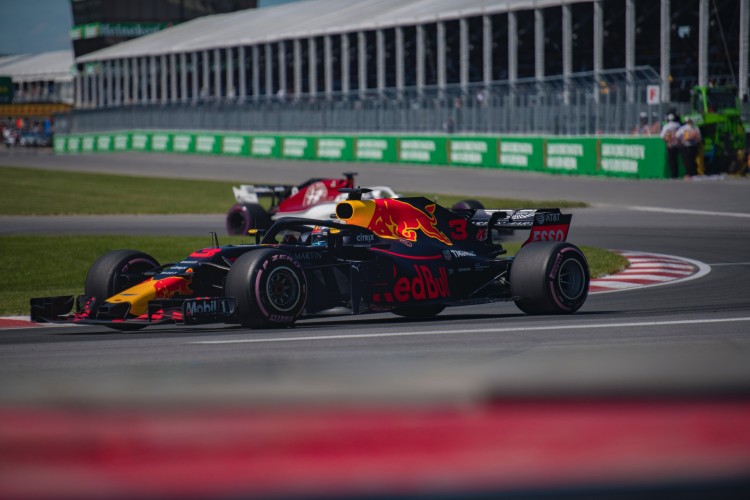
The global economy experienced a severe downturn in 2008. During the years 2008 and 2009, several car manufacturers, including BMW, Honda, and Toyota, left Formula One, citing the weak economy as the reason.
Peter Sauber, the team’s founder, purchased BMW F1, and Honda changed its name to Brawn GP.
Genii Capital has acquired ownership of the Renault racing squad. The 2009 Formula One World Championship was won by Jenson Button of Brawn GP.
Although Mercedes won back its part in McLaren from Mercedes in 2010, Mercedes purchased Brawn GP so that it could compete in Formula One. At this point, only McLaren, Renault, Mercedes, and Ferrari remained active manufacturers in the sport.
In order to take the role of the teams sponsored by the manufacturers, Formula One welcomed four new teams. The United States Formula One Team, Hispania Racing, Team Lotus, and Virgin Racing were the teams that competed.
The new teams to Formula One were not adequately prepared for the high costs associated with participating in Formula One racing. In addition to that, the suggested cost limitations have already been scrapped 3 times.
Because they lacked the financial resources of the more experienced teams, the more recent teams were forced to finish in the lower positions in the competition. By 2016, the 4 teams had been eliminated from contention.
What Significant F1 Rule Change Happened in 2014?
In 2014, the FIA mandated that all vehicles must be equipped with turbocharged V6 engines that are 1.6 liters in capacity. This was done in an effort to improve energy recovery and increase fuel efficiency.
The fact that the manufacturer’s road car buyers could readily recognize the engine size was a source of satisfaction for the manufacturer. There would be a limit of 4 engines per season for each car.
In 2015, Honda made its comeback to Formula One. Since 2014, however, Mercedes has been victorious not just in the World Drivers Championship but also in the World Constructors Championship.
While racing for Mercedes, Lewis Hamilton has won a total of 6 driver’s championships, whereas Nico Rosberg has won the championship in 2016. In 2014, the racing teams Marussia and Caterham were both placed under administrative control. There was also uncertainty around the future of Sauber and Force India.
In 2016, the Haas Formula One Team became a member of Formula One. Following Honda’s return to the sport in 2015, Renault made its comeback to Formula One as a team in 2018. In subsequent years, a greater number of manufacturers joined the competition.
During the 2018 racing season, Alfa Romeo was Sauber’s sponsor. Aston Martin offered to support Red Bull that year. The next year, Sauber underwent a rebranding and became known as Alfa Romeo Racing.
Following an intervention by Lawrence Stroll, the Racing Point team would compete in the 2021 season as Aston Martin.
In 2020, all ten teams participated in the signing of a new Concorde Agreement, which will connect them to the sport until 2025. The deal stipulated that each of the teams would be limited to spending no more than $145 million on the development of their vehicles.
The purpose was to encourage fair competition and to advance environmentally responsible development. Due to the widespread COVID-19 pandemic, the upcoming Formula One season of 2020 had to be postponed and rearranged.
What Exactly Is a Formula One Grand Prix?
A weekend is reserved for the running of a Formula One Grand Prix. Every Friday is a dedicated practice session day, and on that day there are always 2 free practice sessions. In Monaco, the practice sessions are placed on Thursday rather than Wednesday as they were previously scheduled.
On Fridays, 3rd drivers are permitted to practice, but they are required to utilize a car that has been approved for a race driver because a race can only have a maximum of two cars.
On Saturdays, there will be qualifying sessions, and the results of those sessions will be used to set the starting order for the race. The Grand Prix is the most important event of the weekend, and it takes place on Sunday.
Circuits often have a variety of fan-oriented entertainment activities on each and every weekend day they are open to the public. On Sunday, the Grand Prix will be followed by some of the most exciting competitions.
What Does a Formula 1 Qualifying Round Entail?
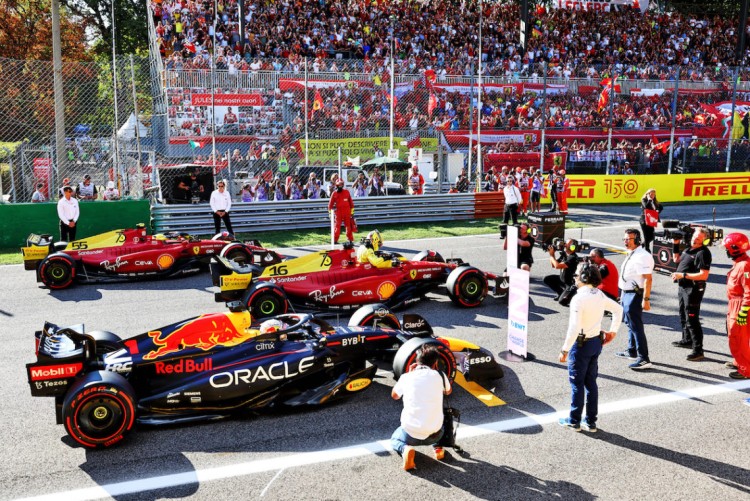
During the F1 Qualifying Sessions, the drivers compete against one another to set the quickest lap times possible; this helps decide where the drivers will begin on the starting grid.
In the first round of qualifying, known as Q1, the 5 drivers with the lowest times are given the positions on the grid that are furthest to the back. There are only 20 vehicles in a race, thus the 15 drivers who are still competing select whose starting positions are the worst of the following 5 in Q2.
The final 10 drivers compete against one another in the third and final round of qualifying to determine who will start in the best position. The race officials give each driver fifteen minutes to record their quickest lap times.
The starting position on the first row of the grid is reserved for the competitor whose lap time is the quickest. The remaining drivers have been rated based on the number of laps they have completed the quickest, and they will begin the race in the positions that have been allotted to them.
Drivers that qualify for Q3 are given a set of soft tires to use. After the qualifying round, the drivers are required to hand in their tires for inspection.
The driver who advanced to the third qualifying round is required to begin the race on the same set of tires that they utilized in the second qualifying round unless the track circumstances and the weather dictate differently.
At the beginning of the race, every other driver will have the opportunity to select the tires they will use for their cars.
If a driver’s vehicle does not pass inspection by the FIA, they will not be allowed to participate in qualifying sessions. In order to comply with the rules of the race, the vehicle must begin from the very last spot on the grid.
At the conclusion of qualifying, all penalties incurred throughout qualifying will be taken into account. Because of the penalty, the driver will begin the race in a different position than they had planned.
Altering a gearbox or one of the engine’s components can be considered an infraction.
How Long Does a Formula One Grand Prix Race Last?
The first lap of a Grand Prix race is considered a warm–up and is referred to as the formation lap. At the conclusion of the circuit, the drivers line up in the starting grid at the positions that have been assigned to them.
Above the track, there are 5 red lights that shine at regular intervals of 1 second each. The countdown to the start of the race will begin when all five of these lights go out at the same time. When a vehicle loses power, the race must be resumed.
Note: In the event that there is a significant accident or if there is bad weather, the race may be resumed. After the drivers have reassembled themselves in the starting formation, the race will begin again from the point where it left off.
If the race is interrupted early after the start for any reason, including a heavy downpour or any other situation, it will begin again from the point where it was stopped.
2 hours is the most time that can be completed in a Grand Prix race. The Fédération Internationale de l’Automobile (FIA) has determined that 305 kilometers are the optimal distance for auto racing.
On the other hand, slower circuits such as Monaco have a smaller distance to cover, which makes it easier for the drivers to finish the race within the allotted amount of time. Pit stops are allowed drivers to change damaged components such as tires or other components.
What Function Does the F1 Race Director Fulfill?
The director of the race is accountable for the overall management of the race. He does pre-race inspections on the vehicles and is in charge of the lighting before the beginning of each race.
In essence, he is responsible for enforcing the FIA’s rules. In addition to this, he mediates disagreements that arise between drivers and teams.
Note: In addition to his many other responsibilities, he is responsible for determining which teams and drivers should be penalized and then assigning those penalties.
What Are the F1 Safety Cars Used For?
In the event that there is an accident or if there is a threat to the participants, spectators, or marshals, the safety car will be brought into play.
Whenever a safety car is being used, a yellow flag will be waved, and drivers will be required to slow down and keep their place, with passing being prohibited.
Throughout the time that a safety car is on the track, pit stops are not prohibited. As soon as the safety car has left the track, the race will restart with a running start.
The cars are going to be directed to the timing line by the lead driver. After the cars have passed the timing line, the drivers will be able to race against one another and battle for placing positions.
Note: Cars that have been specially prepared for use as safety vehicles are provided to the FIA by manufacturers such as Mercedes–Benz and Aston Martin.
There are many different flags that are used to signal potentially hazardous situations on or around the track. When you see a green flag, it indicates that the conditions are standard.
What System Does Formula One Use to Award Points?
To accumulate points toward the championship under the rules currently in place, a driver must cross the finish line in the top 10 of each race they compete in.
One point is given to the racer who completed the race with the quickest lap, regardless of where that driver placed in the overall standings.
Those who do not place in the top 10 are not given any points for their performance. The points that were awarded are detailed in the following table.
| POSITION | POINTS |
|---|---|
| 1st | 25 |
| 2nd | 18 |
| 3rd | 15 |
| 4th | 12 |
| 5th | 10 |
| 6th | 8 |
| 7th | 6 |
| 8th | 4 |
| 9th | 2 |
| 10th | 1 |
| FL | 1 |
At the end of the season, the total number of points earned by each driver is tallied. The title of World Driver’s Champion is bestowed upon the competitor who finishes the season with the most points.
Regardless of whether a driver changed teams in the middle of the season, his previous points will be tallied and counted toward the final tally at the end of the season.
If a driver stops during the race but has finished more than 90 % of the distance traveled by the winner of the competition, he may be eligible to receive points for his performance.
Constructors receive points as well, and the amount they receive is based on how well their vehicles do during the race. The World Constructors’ Championship will go to the builder who accumulates the most points during the course of the competition.
The FIA requires a payment of US$30 million from each constructor that wants to compete in Formula One. Because of this, constructors like purchasing existing registered teams rather than starting their own.
The Cost of Formula One: Why Is It so High?
The operation and maintenance of a Formula One team is an extremely expensive endeavor. Because of this, Formula One is consistently ranked among the most expensive sports in the world.
The FIA is aware of this fact and as a result, is actively working to reduce the financial burdens associated with ownership of a Formula One team.
Creating a race car is the first step for a Formula One team. Additionally, it is required to keep a workforce of hundreds of employees at all times and pay them all across the entire year.
Managers, designers, engineers, and mechanics will make up the staff. In addition to these positions, there are support staff members. These workers bring a high level of expertise to their roles and deserve to be compensated accordingly.
There are expenses associated with using air freight to transport employees, vehicles, and spare parts to different locations throughout the world.
Note: For the objective of transporting automobiles and any other supplies from the airport to the venue, specialized trucks are required. The workers have to be housed either at the venues themselves or in close proximity to them.
The team is responsible for bearing all of these costs, which add up to a significant amount.
The teams and the FIA came to a deal in 2020 called the Concorde Agreement, which caps the teams’ spending at $145 million in the US.
The budget limit does not apply to items like the salary of the top management, the drivers, the engines, and a few other things. They have also reached an agreement to continue utilizing the same vehicles through the year 2020.
Every team conceals the true amount of money they spend during the course of a season. Because of this, it is difficult to provide an accurate estimate of the costs incurred by any given team.
However, a conservative estimate suggests that a less financially secure team will spend at least $160 million over the course of a season. A group that regularly has access to financial resources might spend more than $400 million each year on its operations.
Conclusion
This article will be interesting to anyone looking to dive deeper into the sport of Formula 1 and to all the fans that have been following the sport for years.
